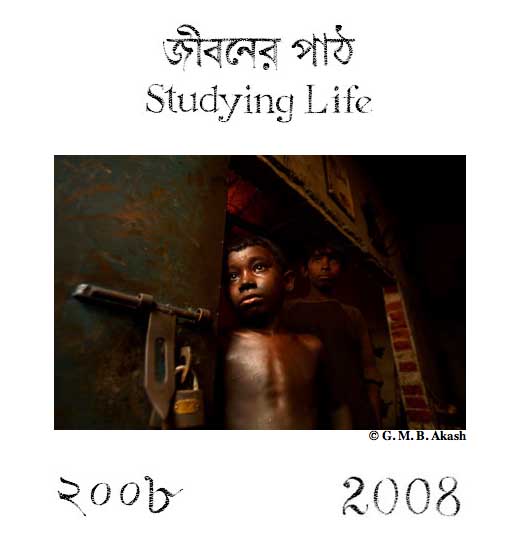

When Pathshala started, I can remember Dhaka’s photography circles reacted by forming two camps. One was thrilled at the prospect of ‘real’ photography education starting in Bangladesh for the very first time, and the other remained strongly sceptical about what Shahidul Alam was getting up to next.
Pathshala’s first students came from the former camp, and I was one of them. Our group had two women, Munira Morshed Munni and myself. Munni apa was already an established photographer, along with other seniors like Peu, Ron, Abir, and Shafi. And then there were Prince, Romel, Czhoton and me. In photography, we were just crawlers in nappies. Akash and Badrul were already out there riding tricycles, following the same analogy.
As students, we wanted to revolutionise the face of photography as we knew it – in Bangladesh, South Asia, and the world. Drik and its philosophy was our inspirational starting point. We were also going to change the world with our work. We didn’t know how we would do that, but were determined, and believed we could. Because now we were students of Pathshala.
Our initial excitement dried up somewhat as we discovered that our school was not perfect. It was going to grow with us, and that meant many things would not go as smoothly as we would have liked. That was difficult for many of us to accept at the time. But as the first students, we enjoyed a tremendous amount of autonomy in deciding how our study would progress. Specific topics were introduced because we asked for them. Tutors were refused because we didn’t like them. We freely argued with tutors on media, politics, morality, the environment, feminism, religion, issues of representation, and some photography thrown in between. This level of interaction was truly unheard-of in Bangladesh. Coming from an education system where students rarely question their teachers, we were spoiled with attention.
The informal environment at Pathshala made sure many friendships were formed and tested. Sometimes our egos would get the better of us, but there were critical discussions on each others’ work, plans for what to do next, disappointment over projects not working out, chatter about the next big camera, impromptu singalongs, and many, many cups of tea under the campus mango tree.
When I joined as a tutor sometime after graduating, I could see just how indulged we had been. The school’s structure was more formal by then, but the students’ say in their participation was still as strong. This didn’t make things easier from a management point of view, and students strictly subdued are much easier to herd around. But this was Pathshala, and we didn’t believe in encouraging the herd mentality. As turned out, at least in my view, the students who were most vocal and rebellious also produced the best work.
As a student, then a tutor, and now a well-wisher of Pathshala, my idea of whether the school has been successful saw its own ups and downs. We former students often end up discussing this among ourselves. Were we successful as professional photographers? Many of us have won international accolades, and publish their work around the world. Did we change photography as it was practiced? Where photography used to be learned on the job, most of Pathshala’s graduates today work in local newspapers, magazines and in television. Did our photography change the world? It certainly helped the world to see Bangladesh differently. With time that will force its own changes.
Sameera Huque
7 thoughts on “Calendar 2008”
Leave a Reply
You must be logged in to post a comment.

thank you
Delighted to see it and wish you best of luck.
Cover of your 2008 calendar. The look of the little boy resembles that of Kinta Kunte in Roots. The fantastic expression by the boy and the artistry with light by the photographer demands appreciation. Keep up with, Akash.
That with the flying kick was an unique piece, no doubt. Thanks.
I miss my country,I used to take my daughter to her schoolpassing in front of your Photo gallery,your pictures remind me of my locality,I am working in a Hospital in Singapore.
Its also reflect the situation of Nepal.
thnx for joining me.